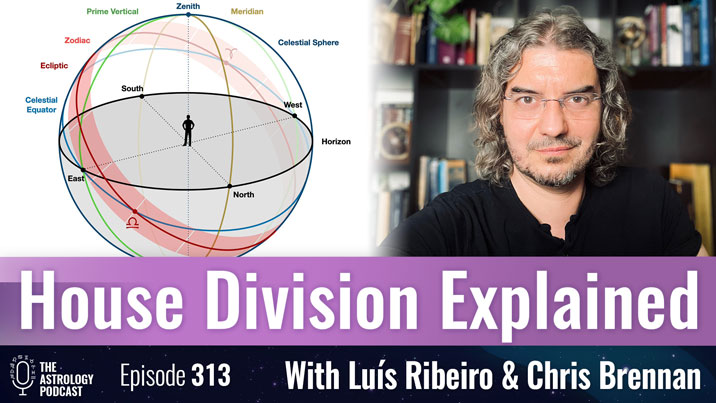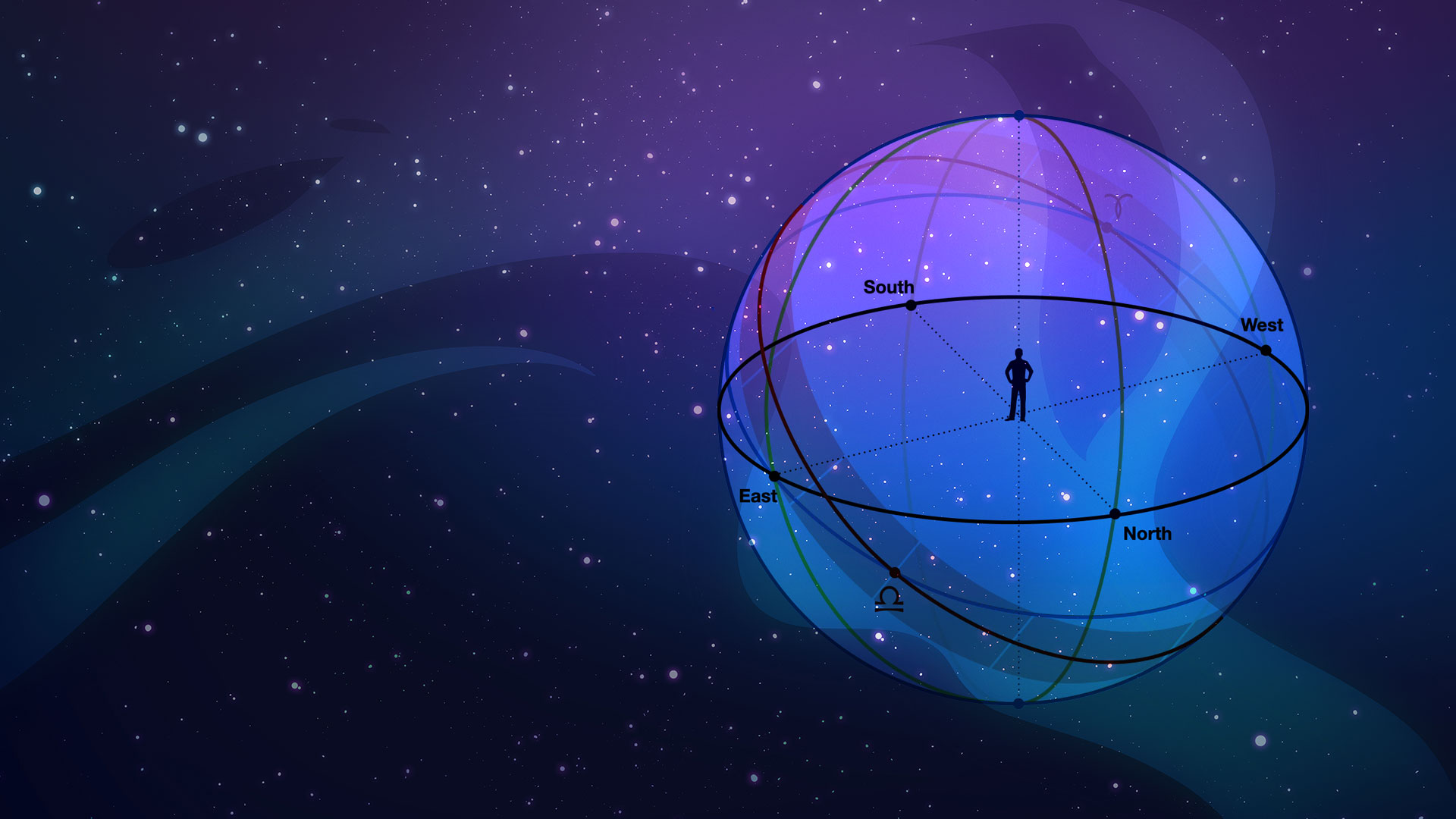
In episode 313 astrologer Luís Ribeiro joins the show to explain the astronomy and mathematics underlying the calculation of the different forms of house division in western astrology.
We begin with a historical timeline showing when some of the different forms of house division were introduced, who the earliest sources are that mention them, and the time periods in which they reached the peak of their popularity.
Then we go into a detailed breakdown of the astronomy and mathematics underlying how some of the most popular forms of house division are calculated.
We focus in particular on the rationale for whole sign houses, equal houses, Porphyry houses, Alcabitius, Campanus, Regiomantanus, and Placidus.
Our goal was not necessarily to advocate for any one system or talk about which was better to use in practice, but instead to help astrologers understand how the cusps are divided according to each approach.
Towards the end of the episode we have a section talking about an astronomical instrument called an astrolabe, and showing how medieval astrologers used it in order to calculate the Ascendant, Midheaven, and other intermediate house cusps.
For more info about Luis and his work visit:
This episode is available in both audio and video versions below, although we would encourage you to watch the video version because there are a lot of visuals.
Timestamps
Here are some timestamps for topics covered at different points in the episode:
00:00:00 Intro
00:01:00 Luis’ book On the Heavenly Spheres
00:01:50 Luis’ research on the astronomical rationale for house division
00:04:18 Understanding the basis of house division systems
00:05:04 Why astrology students should learn astronomy
00:07:20 Famous astrologers who were astronomers
00:08:40 Requirement to draw charts by hand in some schools
00:11:45 Different types of house systems
00:14:30 House division methods through time
00:17:38 Whole sign house system and its disappearance
00:20:55 Equal house system
00:29:50 Porphyry house system
00:33:57 Alcabitius house system
00:41:03 Works on house division systems
00:43:40 Whole sign not considered a house division by some academics
00:51:25 1959 German book that acknowledges whole sign houses
00:54:03 Campanus house system
00:57:00 Regiomontanus house system
01:05:50 Astro.com house system options
01:07:30 Solar Fire house system options
01:09:34 Placidus house system
01:14:26 Primary or diurnal movement
01:17:47 The ecliptic
01:22:27 Numbering of the houses
01:27:03 Dividing the circle
01:31:43 View of ecliptic from astronomy program
01:39:59 The meridian
01:44:50 Square chart example
01:46:40 3D diagram of the divisions
01:50:00 Zenith
01:53:00 Equator
01:54:05 Equator view from astronomy software
01:56:40 View from the north in the astronomy software
01:59:10 The zodiacal belt
02:00:43 2D diagram of the divisions
02:02:09 Whole sign method
02:04:48 Equal Houses method
02:08:12 Porphyry method
02:14:44 Alcabitius method
02:19:20 Campanus method
02:24:19 Regiomontanus method
02:28:32 Placidus method
02:38:39 Length of life technique and house division
02:54:30 Better documentation needed of house systems
02:55:45 Bias in academic research
02:57:42 Errors in descriptions of house systems
03:03:33 Different cusps
03:04:36 Astrolabe basics
03:14:10 Calculating houses with an astrolabe
03:26:18 Horary astrology and the astrolabe
03:29:00 Astrology boards
03:32:07 Astrology in academia
03:34:11 The challenge of different house systems
03:38:50 Different house systems for horary and natal
03:45:31 Revised version of Luis’ book
03:46:00 Luis’ website and Astro Project
03:46:43 Upcoming episode on Helena’s work and new book
03:47:55 Closing remarks
Watch the Video Version of This Episode
Watch the video version of this episode on house division in astrology:
–
Transcript
A full transcript of this episode is available: Episode 313 transcript
Listen to the Audio Version of This Episode
You can either play the audio version of this episode of the podcast directly from the website or download it as an MP3 to your device by using the buttons below:
Podcast: Play in new window | Download (Duration: 3:49:20 — 210.3MB)
